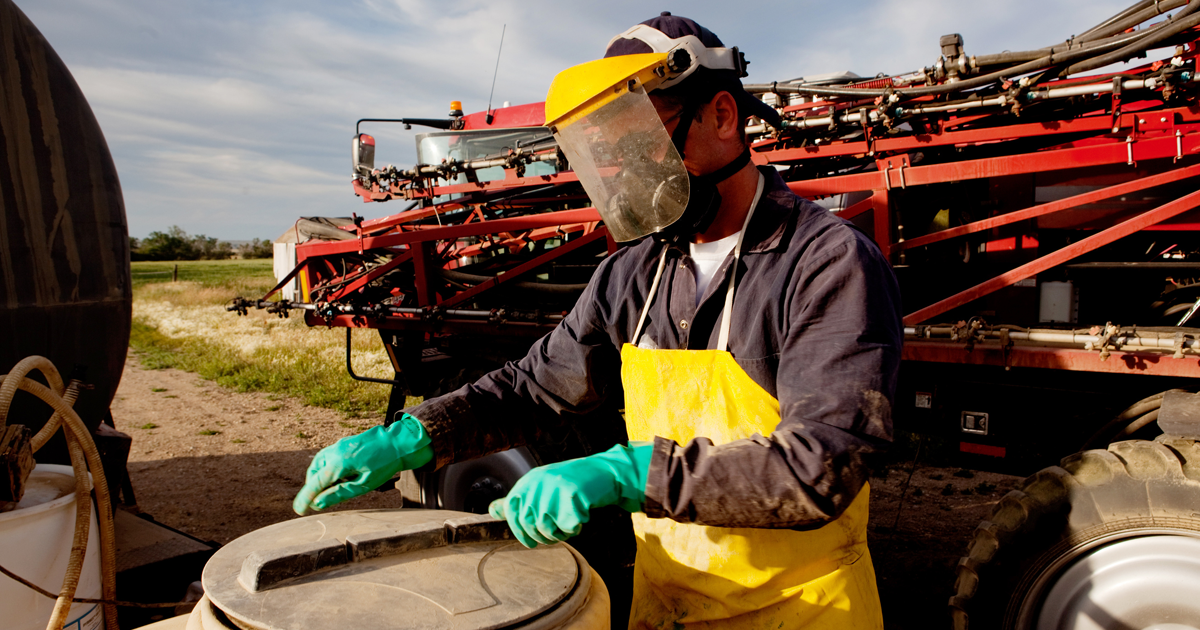
The Agricultural Industry employs nearly 2 million full time workers across the United States. Additionally, this industry hires another 2 to 4 million workers each year for seasonal work. Worldwide, there are more than 1.3 billion workers in the agricultural industry. Hundreds of employees are killed every year. In 2012, there were 374 worker deaths reported in the US. Worldwide, nearly 170,000 deaths occur every year. Work conditions vary greatly from country to country, but the United States is the focus here. In addition to fatalities, nearly 200 agricultural workers suffer a work-related injury each day. Many of these injuries cause employees to miss work, and cost companies in insurance, overtime, and other expenditures in order to treat injured workers, and cover missing shifts. So, the question is: Is your farm safe?
What are the hazards associated with farming?
Farming is a job that requires a significant amount of physical labor. Any job that requires lots of bending, lifting, twisting, walking, or other physical movements is prime for injury occurrence. According to the National Institute of Occupational Safety and Health, nearly 50% of work-related injuries suffered by seasonal crop workers between 2008 and 2010 were some variation of a strain or sprain. Although these are not necessarily serious injuries they can result in missed work time, and reduced efficiency. Additionally, these injuries can cause an increase in insurance rates if medical treatment is needed. Injuries from lifting, bending, and twisting can be debilitating and cause serious back ailments. These types of back injuries could be strains to ligaments, or even a herniated disk. Oftentimes, these injuries take a long time to heal, and require a reduced workload. Any employee suffering from such an ailment would be seriously, temporarily impaired. Avoid back injuries, as well as other similar injuries, by maintaining proper posture, lifting technique, and physical fitness.
Heavy equipment is a crucial component to the work that takes place in the agricultural field. Tractors, trucks, skid steers, combines, the list goes on and on. However, with these great machines comes great danger. In fact, tractors are one of the leading culprits contributing to farming injuries and fatalities. The dangers with tractors (as well as other heavy equipment) include; tractor fires, people being run over by tractors, people being caught in mechanical parts of tractors, and tractor roll overs. Tractors are now outfitted with Roll Over Protection Systems, or ROPS, that reduce injuries and fatalities from rollover accidents. Additionally, the NIOSH has developed Cost-effective Roll Over Protection Systems, or CROPS, which were created to fit older tractor models. The CROPS attachment is a great alternative for farmers who may have smaller businesses, and use older equipment, but still want to beef up their safety measures. Routine maintenance should also be carried out on all vehicles to ensure proper functioning. In addition, all drivers should be adequately trained in the use of the machine, as well as in emergency protocols.
Finally, pesticides are another significant hazard faced by agricultural workers. Chemicals that are spread to kill insects and protect crops are also extremely hazardous to human health. These chemicals are known to cause multiple forms of cancer. In fact, even though farmers are typically physically healthier than the rest of the general population they have high occurrences of diseases such as leukemia, and non-Hodgkin’s lymphoma. This could be attributed to the exposure farmers have with toxic pesticides. Oftentimes, agricultural workers are exposed to pesticides when diluting the chemicals with water, or preparing the chemicals to be spread via a hose or other spreading equipment. Workers can also be exposed when walking through areas that have been exposed to pesticide, such as crop fields. In order to reduce the chances of exposure it is important for farms to adhere to the guidelines set by the Environmental Protection Agency (EPA). These guidelines focus on using engineering controls to help prepare pesticide for use, thus reducing the direct exposure to workers trying to dilute it or load it for application. PPE is also encouraged whenever there is a question of exposure to Pesticides. Do not let workers become complacent. Repeated exposure can result in fatal diseases. Demand and enforce the proper precautions and protect your workers.
It is always beneficial to communicate accident occurrences to the workplace environment. Rallying employees around safety and accountability is imperative to a safe workplace. Signage displaying the number of days since the last accident is a phenomenal way to promote safety awareness. Having a sign tailored to your company’s specific needs can greatly encourage the workforce to value safety in the workplace.
The agricultural industry is one of the most dangerous work environments in the entire world. If you own a farm, or work in the farming industry, take it upon yourself to improve the conditions your work in. Put safety first, and demand the same from your employees, or your employer. Do not let carelessness cause accidents.




